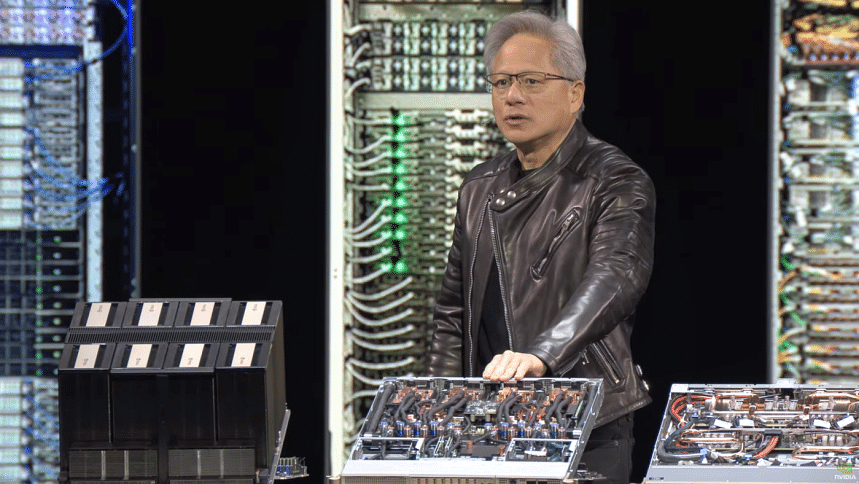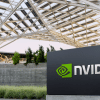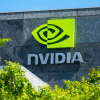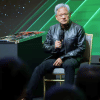Nvidia unveils new graphics cards and other tech

At its annual GPU Technology Conference (GTC), Nvidia CEO Jensen Huang introduced a range of new products and initiatives aimed at advancing the company's position in artificial intelligence and robotics. Here is a quick look at everything Nvidia announced, including updates to hardware, software, and partnerships.
Blackwell Ultra GPU
Nvidia unveiled the Blackwell Ultra GPU, scheduled for release in the second half of 2024. The new GPU is designed to improve performance for training and running large AI models, offering 40 times the speed of Nvidia's previous Hopper architecture. It features increased memory capacity to support more complex AI systems, such as reasoning models and autonomous agents. Huang noted that the Blackwell Ultra is more energy-efficient, which could reduce operational costs for large-scale AI deployments.
Vera Rubin architecture
The Vera Rubin architecture, set to launch in late 2026, was introduced as a future platform for data centres. It includes a custom-designed Vera CPU and advanced GPUs, aiming to optimise data transfers between chips—a key challenge for AI systems requiring multiple interconnected processors. A more advanced version, Vera Rubin Ultra, is expected in 2027. The platform is intended to improve efficiency and reduce costs for industries relying on large-scale computational power.
DGX AI computers
Nvidia announced DGX AI computers, powered by Blackwell Ultra chips and built in collaboration with Dell, Lenovo, and HP. These desktop machines are designed to allow developers to run and refine large AI models locally, potentially reducing reliance on cloud-based systems. The DGX line is positioned as a competitor to high-end workstations like Apple's Mac Pro.
Quantum-X and Spectrum-X networking chips
Nvidia introduced Quantum-X and Spectrum-X, networking chips that use silicon photonics to transfer data using light instead of electricity. Quantum-X is set to be available in late 2024, with Spectrum-X following in 2026. These chips are intended to connect millions of GPUs across global AI infrastructure while reducing energy consumption, which could benefit industries like autonomous vehicles and smart manufacturing.
Dynamo software
Nvidia announced Dynamo, a free software tool designed to improve AI reasoning—the process by which AI models solve complex, multi-step problems. The software aims to make AI systems more efficient in tasks like analysing medical data or generating detailed responses.
Isaac GR00T N1 model for humanoid robots
Nvidia also announced Isaac GR00T N1, a customisable foundation model for humanoid robots. The model uses a dual-system approach, combining rapid decision-making for immediate tasks with slower, more deliberate planning for long-term goals. Developed in collaboration with Google DeepMind and Disney Research, the accompanying 'Newton physics engine' allows robots to train in simulated environments. A demonstration featured a small robot named Blue, showcasing potential applications in healthcare and logistics.
Omniverse Blueprint for AI factories
According to Huang, Nvidia's upcoming Omniverse Blueprint tool will enable engineers to design and simulate large AI data centres using digital twins—virtual replicas of physical systems. The tool was demonstrated with a plan for a 1-gigawatt AI factory, highlighting its potential to reduce costs and errors in constructing AI infrastructure.
Cosmos world models
The Cosmos platform introduces customisable AI models capable of generating virtual environments for training robots and AI systems. These environments aim to simulate diverse real-world conditions, from factory floors to disaster zones, to improve the robustness of AI applications.
Annual roadmap and partnerships
Nvidia outlined an annual release cycle for AI infrastructure, with updates planned for cloud, enterprise, and robotics sectors. The company also announced partnerships, including a collaboration with GM to develop self-driving cars, factory robots, and safety systems under the Nvidia Halos initiative. Huang described robotics as a significant opportunity, citing projections of a 50 million global worker shortfall by 2030.

 For all latest news, follow The Daily Star's Google News channel.
For all latest news, follow The Daily Star's Google News channel. 








Comments